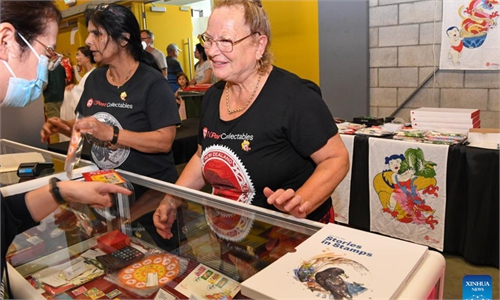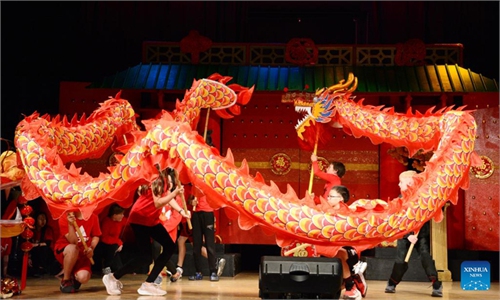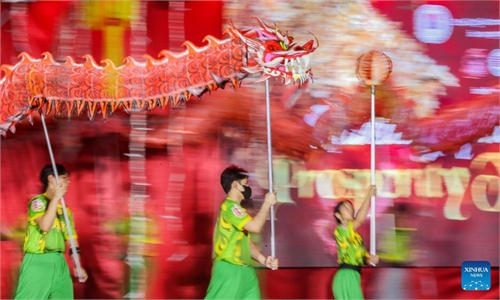ARTS / CULTURE & LEISURE
US returns lost Western Zhou Dynasty relic to China, deepening mutual exchanges
Gem comes home
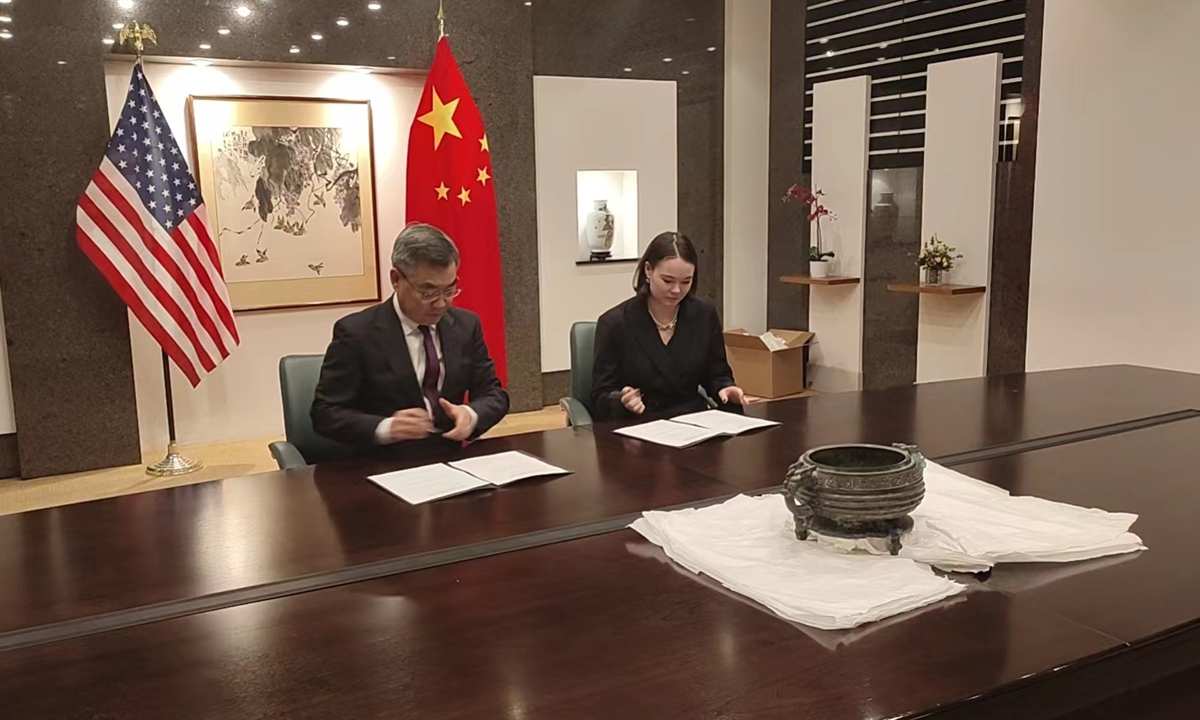
Photo: Courtesy of National Cultural Heritage Administration
China's cultural authority has successfully retrieved the stolen and lost Western Zhou (1046BC-771BC) bronze vessel known as Feng Xingshu Gui from the US, marking the end of its 40-year odyssey abroad and its return home. This move serves as a positive example of the return of more lost cultural relics to their home country in the world, including China, and it is a vivid illustration of friendly exchanges between the Chinese and American people, said the National Cultural Heritage Administration (NCHA) on Wednesday.The artifact safely arrived in Beijing aboard flight CA986 on January 28. The vessel was confirmed to be the original Feng Xingshu Gui and was classified as a first-class cultural relic, according to the NCHA.
During a returning ceremony in the US, Deputy Minister of Culture and Tourism and head of the NCHA Li Qun delivered a video speech, expressing gratitude to all parties involved in facilitating the return.
Li said that the return of the relic is a significant achievement in implementing the consensus reached by the leaders of China and the US in San Francisco.
Since the signing of a memorandum of understanding (MOU) between the governments of China and the US to prevent the illegal entry of Chinese cultural relics into the US, many American individuals, like Raymond King and his mother, have assisted in the return of lost Chinese cultural relics through concrete actions, providing positive momentum for the expansion of cultural heritage protection and humanitarian exchanges between the two countries.
Li noted that combating the illegal trafficking of cultural property aligns with the common interests of all humanity and requires joint efforts from all countries and various sectors of society.
The governments of China and the US signed an extended MOU that aims to prevent the illegal importation of Chinese cultural artifacts into the US on January 14. The agreement will be valid for five years, the NCHA announced in January.
Thanks to bilateral judicial cooperation based on the agreement document, 504 Chinese cultural relics had been returned from the US to China on 15 occasions from 2009 and 2023, according to the NCHA.
Huo Zhengxin, a law professor at the China University of Political Science and Law who participated in the return case, told the Global Times that the return of this precious cultural relic is an achievement for China in its efforts to recover lost cultural artifacts from overseas. This case also demonstrates that despite differences in some issues, China and the US have common interests in important areas such as the protection of cultural heritage.
They share the international obligation and mission of protecting cultural relics and combating transnational cultural crimes.
Relic lost and found
The artifact, a product of exquisite bronze casting techniques, was unearthed in a bronze vessel cache from the late Western Zhou period in the city of Baoji, Northwest China's Shaanxi Province in 1978.
Feng Xingshu Gui is 18 centimeters high, has a diameter of 21 centimeters and weighs 6 kilograms. It is composed of a large bowl adorned with double handles in the design of a coiled-nose animal face, resting on three animal-shaped feet.
Experts said that the craftsmanship of the art piece reflects the excellent level of casting technique seen in Western Zhou bronzes as an inscription with excellent calligraphy was cast into the interior of the vessel, which means "crafted by Xingshu of the Feng State, dedicated to his wife Boji, a treasure for all his generations to come." The inscriptions were meant to communicate the owners' political and social achievements to their ancestors and future generations.
However, the cultural relic was stolen in November 1984 and smuggled overseas.
In January 2023, the NCHA learned, through the Chinese Embassy in the United Kingdom, that the bronze vessel had surfaced in New York. They immediately initiated procedures to reclaim the lost artifact, collaborating with China's Ministry of Public Security to collect and compile relevant evidence, and engaged in extensive communication with the collector King and his mother.
Upon learning the of artifact's background, King and his mother decided unequivocally to "do the right thing" and agreed to unconditionally return it to the Chinese government.
On November 11, 2023, under the authorization of the NCHA, Chinese Consul General in New York Huang Ping received and temporarily stored the Feng Xingshu Gui.
People-to-people exchanges hailed
To recognize King and his mother's act of kindness and highlight the achievements of cultural heritage protection cooperation between China and the US, on the afternoon of January 22, the NCHA and the Chinese Consulate General in San Francisco jointly held a ceremony in Portland, Oregon, where King and his mother live, for the return of the bronze vessel. During the ceremony, King and his mother shared details about the relic and reiterated their strong desire to promptly return the lost artifact.
Chinese Consul General in San Francisco Zhang Jianmin, representing the NCHA, presented a donation certificate to King and his mother, commending their contribution to the retrieval and return of lost Chinese cultural relics.
Zhang highlighted that on the occasion of the 45th anniversary of the establishment of diplomatic relations between China and the US, the return of the Feng Xingshu Gui is a significant achievement in cultural exchanges between the two countries. He added that the act enhances China-US friendship and serves as a positive model for global cooperation in the protection of cultural heritage.
Returning lost cultural relics to their original countries is an irreversible trend and tide in the current international community, Zhang Yue, a vice chair of the Interest Group on Cultural Heritage and the Arts, American Society of International Law in the US and associate professor at Southeast University, told the Global Times on Wednesday. Cultural relics with rich historical, scientific, artistic, and archaeological value can only be fully interpreted within their own cultural context. The return of the Feng Xingshu Gui by the US is a sign of respect for China's cultural sovereignty, an acknowledgment of the cultural identity carried by the relics.
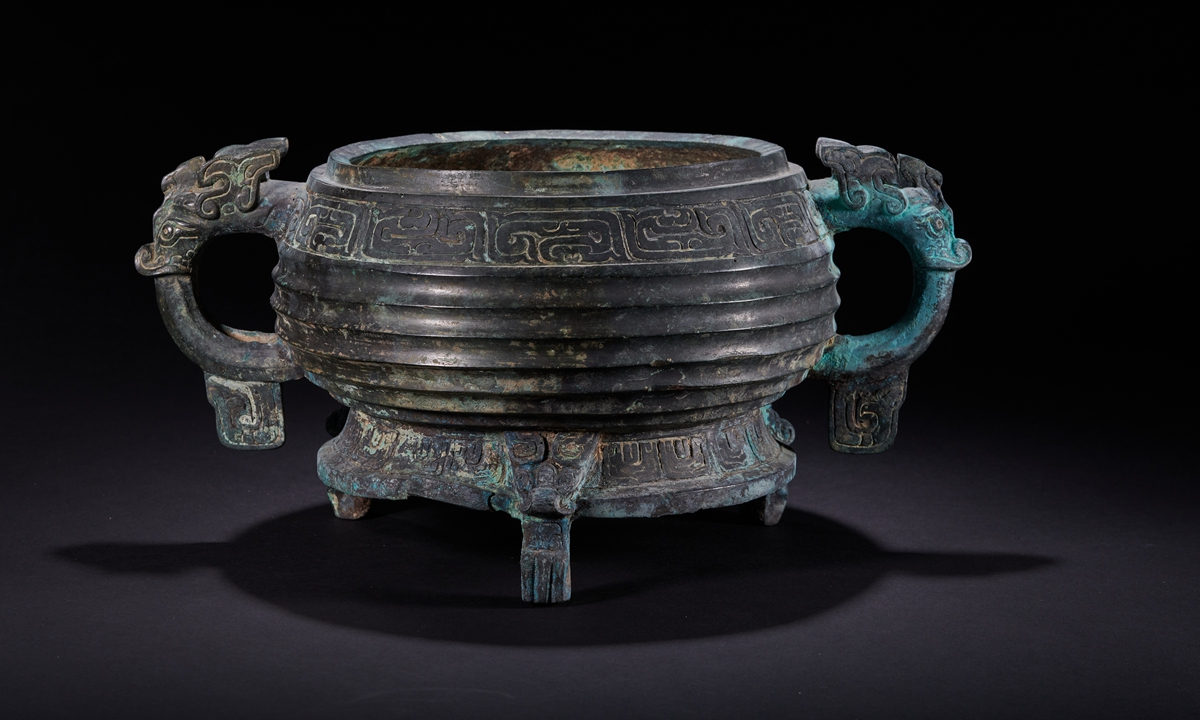
The lost Western Zhou (1046BC-771BC) bronze vessel known as Feng Xingshu Gui Photo: Courtesy of National Cultural Heritage Administration

